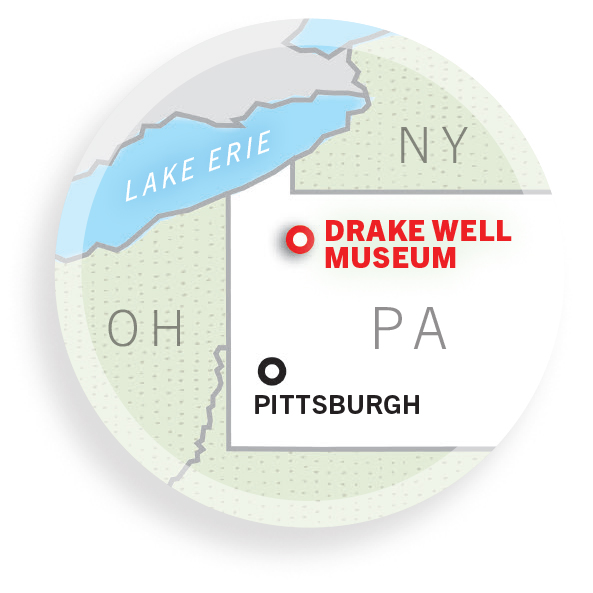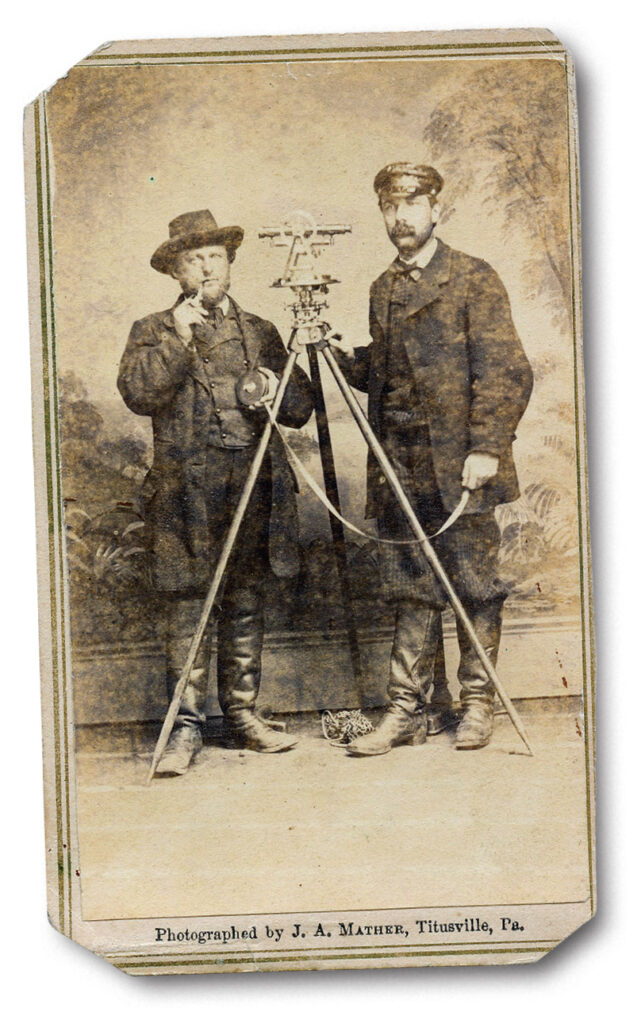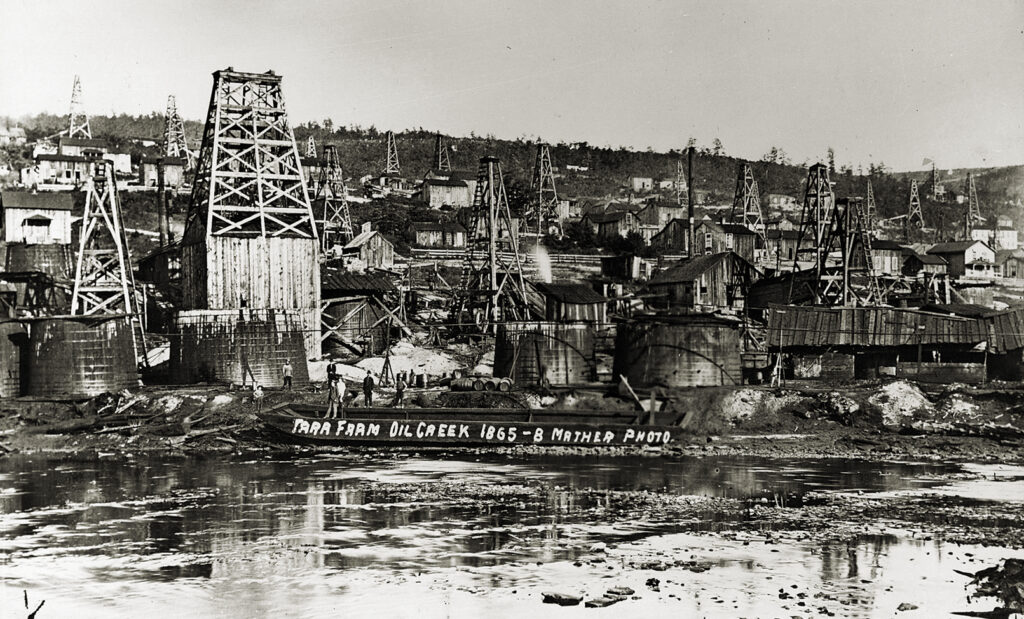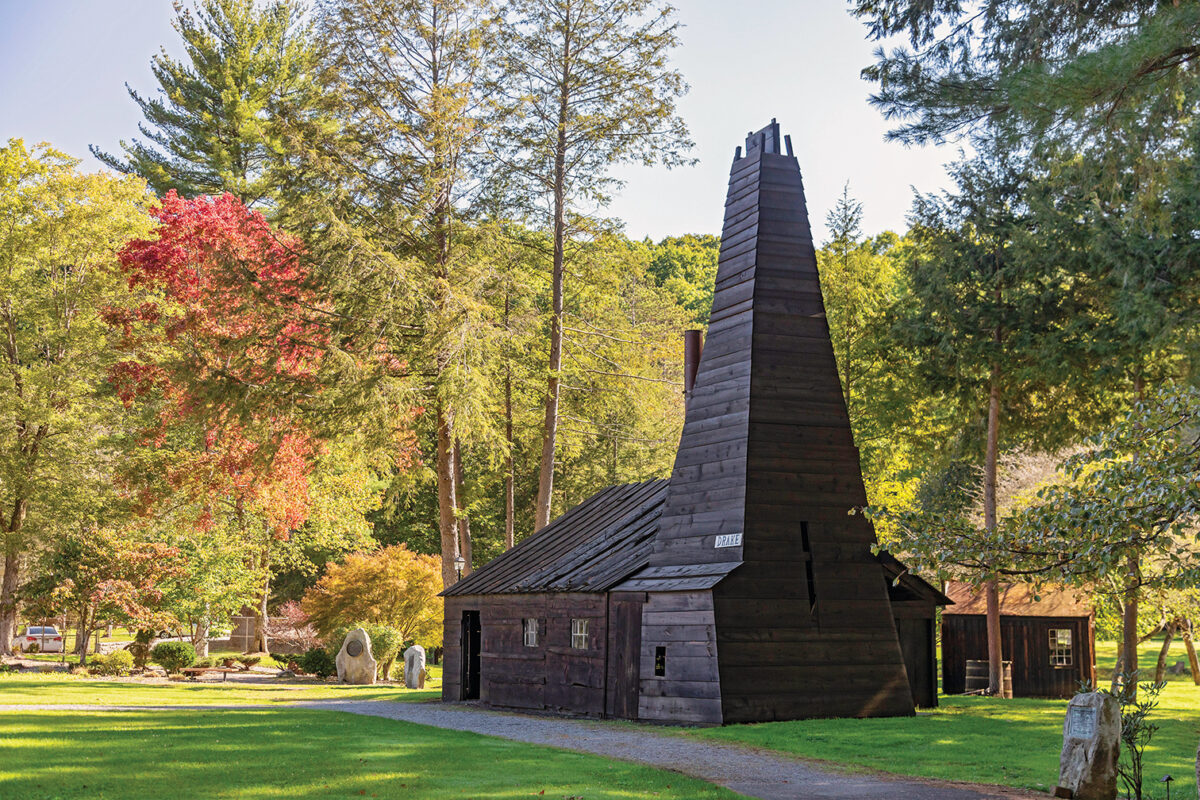
People living near Titusville, Pa., had long been aware of the gooey substance seeping out of the ground. For thousands of years, the black ooze was used for medicinal purposes. Small doses were used to treat scabies, respiratory illnesses, and even epilepsy. The native Seneca people, on whose land present-day Oil City is located, used it for ointments and insect repellant. But it also fouled the water. No one realized this rural section of northwestern Pennsylvania would become the cradle of the modern petroleum oil age.
By the 1850s, scientists and entrepreneurs knew that the substance had a potential to replace the whale oil that lit homes across the country and to lubricate the engines of the booming Industrial Revolution. The problem was getting the oil out of the ground fast enough and at enough quantity to make it worthwhile. Enter Edwin Drake, a former New York railroad worker hired by the Pennsylvania Rock Oil Company of New York to attempt to drill for oil on a plot of land along Oil Creek, near Titusville, in 1857. Drake had no background in geology or drilling and it appears his job for the oil company was due to having invested $200—his life savings—in the company and having a railroad pass.
Drake hired William Smith, a blacksmith who had some experience working on salt wells, as his driller. A way to get to salt deposits without shaft mining, salt wells involved drilling down to a deposit, flooding it with water, and pumping the saline solution to the surface to evaporate. Even with Smith’s expertise, water from Oil Creek kept filling up the well. Finally, in early August 1859, Drake and Smith developed the “drive pipe” method of drilling, which inserted a cast iron pipe down the well to protect the drill and keep water at bay. Drilling three feet a day, they struck oil at the depth of 69.5 feet on August 27, 1859.


Soon after, despite a civil war, people flooded into Titusville, a hamlet of 250 people. By 1865, the population had grown to 10,000. That same year, a new town with the illustrious name of Pithole City was founded near another well. In just six months, Pithole City boasted 16,000 people, dozens of hotels, banks, stores, and saloons, and a daily mail delivery of more than 6,000 letters. Unreliable oil markets, fires, and decreasing oil production led to Pithole’s demise, just as quickly as it appeared. By 1877, it was a ghost town.
“Oil Fever” still burned in Western Pennsylvania, though it was much tempered after the early decades. Focus turned to refining the oil the wells brought to the surface, producing kerosene for the new lamps in people’s homes. In 1901, oil was found in Texas and all eyes shifted to the Lone Star State, where Pennsylvania drills and refining equipment supplied a new oil boom.
Derricks and Ghost Towns
Drake Well Museum and Park, 202 Museum Lane, Titusville, Pa., is home to a reproduction of Drake’s well house over the original well. Administered by the Pennsylvania History and Museum Commission (PHMC), it offers indoor and outdoor exhibits and programs both at the well and at the Pithole City ghost town.
Western Pennsylvania is well-known for its football history. Johann Wilhelm Heisman, son of German immigrants, was raised in Titusville. In high school, he excelled in baseball, football, and gymnastics, as well as theater. Upon graduation in 1887, he played football (a sport his father hated) at Brown University and then at the University of Pennsylvania. He went on to coach at eight different colleges, was a proponent of the forward pass, and developed the center snap. In the late 1920s, he became director of the New York Downtown Athletic Club, where he introduced an award for the best collegiate football player. In 1936, the club renamed this award the Heisman Memorial Trophy.
Hike the hills and valleys that early oilmen trod. Visit Oil Creek State Park, which offers camping, fishing, biking, kayaking, and other outdoor experiences: 305 State Park Road, Oil City, Pa.
This story appeared in the 2023 Summer issue of American History magazine.
historynet magazines
Our 9 best-selling history titles feature in-depth storytelling and iconic imagery to engage and inform on the people, the wars, and the events that shaped America and the world.






